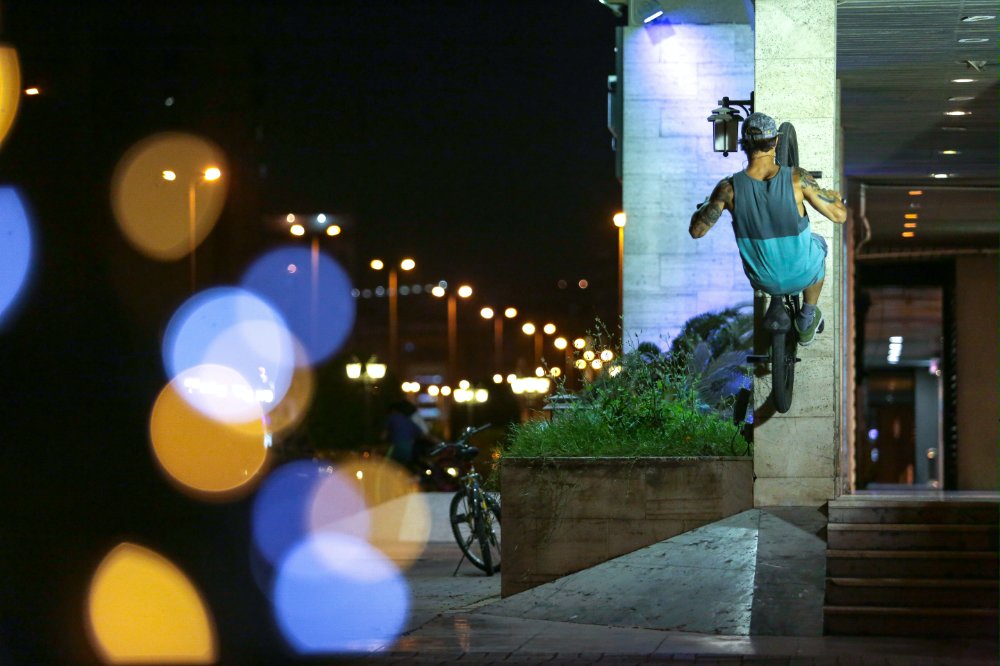Red Bull Photography recently joined our community with a verified brand profile of their own. This partnership isn’t just about amazing photography — it’s also about amazing stories. Behind every shot on Red Bull Photography is a talented photographer, a wild story, and a few lessons learned. We’ll be telling those stories every week here on 500px ISO and the Red Bull Photography website. The cover image is by photographer Ronny Skevis.
Bokeh has become a really important word in photography. It is also a term that is shrouded in myth; it is often confusing to those who claim to understand it. The English word, “bokeh” comes from a mixture of two Japanese words: boke and boke-aji which, roughly translated, refers to, “the visual appeal of the out-of-focus areas of a photograph.” It was first used in the American magazine, PHOTO Technique in 1997, and this defined the spelling “bokeh” to help readers pronounce it correctly: bo- as in “bone” and -keh as in “Kenneth”.
Fast forward to 2016, and bokeh is everywhere. It is used by lens manufacturers as a marketing term, as well as by those who review and test lenses for the photography press. It has acquired such a cult status that the term “bokelicious” has even become a regular catchphrase for one YouTube presenter.
“So far, so good,” You may be thinking. “So what’s the confusion?”
The problem is that, “the attractiveness of out-of-focus areas” is a very subjective concept, which makes bokeh a very hard thing to quantify. Other optical phenomena, like sharpness, distortion, and light fall-off, can be evaluated and compared. But how can we measure the beauty of something? What is attractive to one person might not be to another.
Thankfully, some aspects of “good bokeh” are agreed on by so many people, that we can take them as gospel. Out-of-focus regions should be soft, velvety and smooth, and the edges of blurred objects shouldn’t be visible. If you can see the sharp edge of a blurred tree branch, for example, that’s not good. Also look for the circles made by out-of-focus highlights – if these blend nicely into a kind of continuum then that’s very good. If they are coarse donut-like circles, then that’s bad.
Sometimes you’ll see polygons in the bokeh instead of circles, with the number of sides corresponding to the number of blades that form the lens’s aperture diaphragm. Older lenses do this more than modern ones (pentagons are characteristic of old V-system Hasselblad lenses) since manufacturers now use curved blades to make these diaphragms as close to circular as possible.
There are other lens design characteristics that help too, including the use of high-quality glass elements that minimize distortions and aberrations. Generating good bokeh is a very technical business.
There are some lenses that are known for their good bokeh, and not all are modern. In the early 1990s Nikon released two DC (Defocus Control) lenses designed for phenomenal optical performance and which allow adjustable bokeh. And the Mark IV version of Leica’s 35mm f/2 Summicron lens is known as ‘The King of Bokeh’ amongst Leica collectors.
More recently, Fujifilm has released a special APD version of its 85mm f/1.2 portrait optic, which features an apodization filter that smooths out background blur to a greater degree than the regular version of the lens. Plus, Nikon has just announced a 105mm f/1.4 lens that has fans of shallow-focus photography foaming at the mouth with excitement.
An interesting lens design, resurrected from the past, is the Petzval from Lomography. Its bokeh has a characteristic swirling pattern that some photographers love.
You might notice that bokeh is really only discussed alongside DSLR and mirrorless cameras. This is because we need a large sensor to generate enough background blur in the first place; camera phones and compact cameras use much smaller sensors that make shallow depth of field difficult to produce. But this isn’t always going to be the case.
Earlier this year, smartphone manufacturer Huawei teamed up with Leica to produce the P9 – a phone with two cameras which can simulate the shallow depth of field of a DSLR through computational photography. It’s a trick that many observers predict Apple will use in the forthcoming iPhone 7 and one that has a few potential advantages over the DSLR approach.
The blur effect can be applied both at the time of shooting and after the moment, which means it’s much more flexible. Plus the character of the blur — the bokeh — can be adjusted to give photographers the look and feel that they want.
It’s a promising technology, and one that we are only just starting to see the benefits of. But one thing is for sure: bokeh is about to become a term that a lot more people have heard of.
To see more exciting photos, visit Red Bull Photography on 500px!




Leave a reply